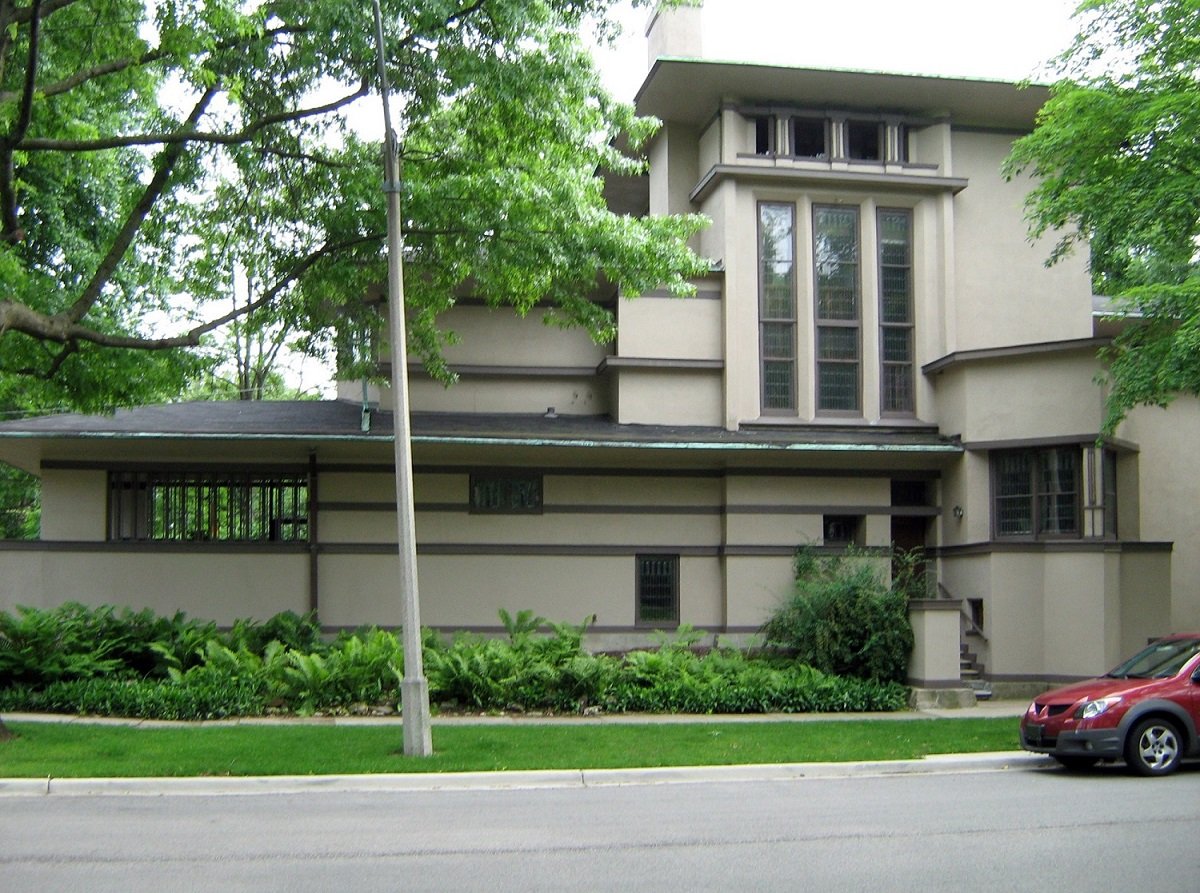#11986. Organic Prairie Style Facade: Horizontal Geometry and Natural Harmony
Before us is a characteristic example of Prairie style architecture, a movement developed by Frank Lloyd Wright in the early 20th century. This house demonstrates the key elements of this style: horizontal lines emphasizing the connection with the landscape, a flat or slightly sloped roof with significant overhangs, and integration with the surrounding nature.
The building facade features the horizontal composition typical of Prairie style with alternating bands of stuccoed surfaces. The expressive horizontal lines are reinforced by protruding cornices and ribbon windows. The central part of the facade is accentuated by vertical elements – tall narrow windows creating an interesting rhythmic contrast with the predominant horizontals.
The color palette is restrained, in natural earth tones, which is another distinctive feature of the Prairie style. The geometry of the building is precise yet not devoid of elegance thanks to the soft transitions between different volumes. Particular attention should be paid to the decorative elements of the windows with their characteristic geometric glazing pattern, giving the facade rhythm and completeness.
Integration with the landscape is achieved not only through architectural techniques but also through carefully planned landscaping: low shrubs emphasize the horizontal lines of the building, while tall trees frame it, creating an organic unity with the natural surroundings.
For modern home building, this style offers valuable ideas: the use of horizontal lines to visually expand space, integration with the landscape, application of natural materials and colors, and the creation of sheltered outdoor spaces through projecting eaves. Such techniques help create a house that is not only aesthetically appealing but also functional and harmoniously integrated into its surroundings.
